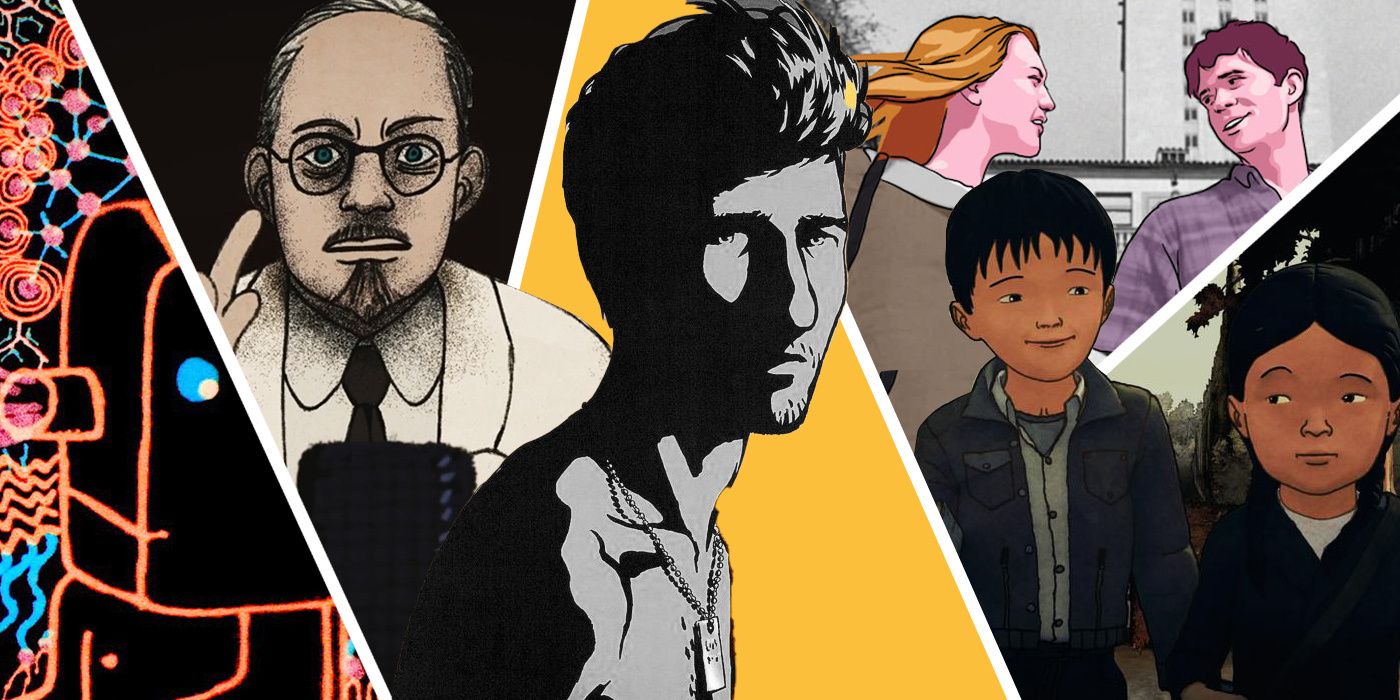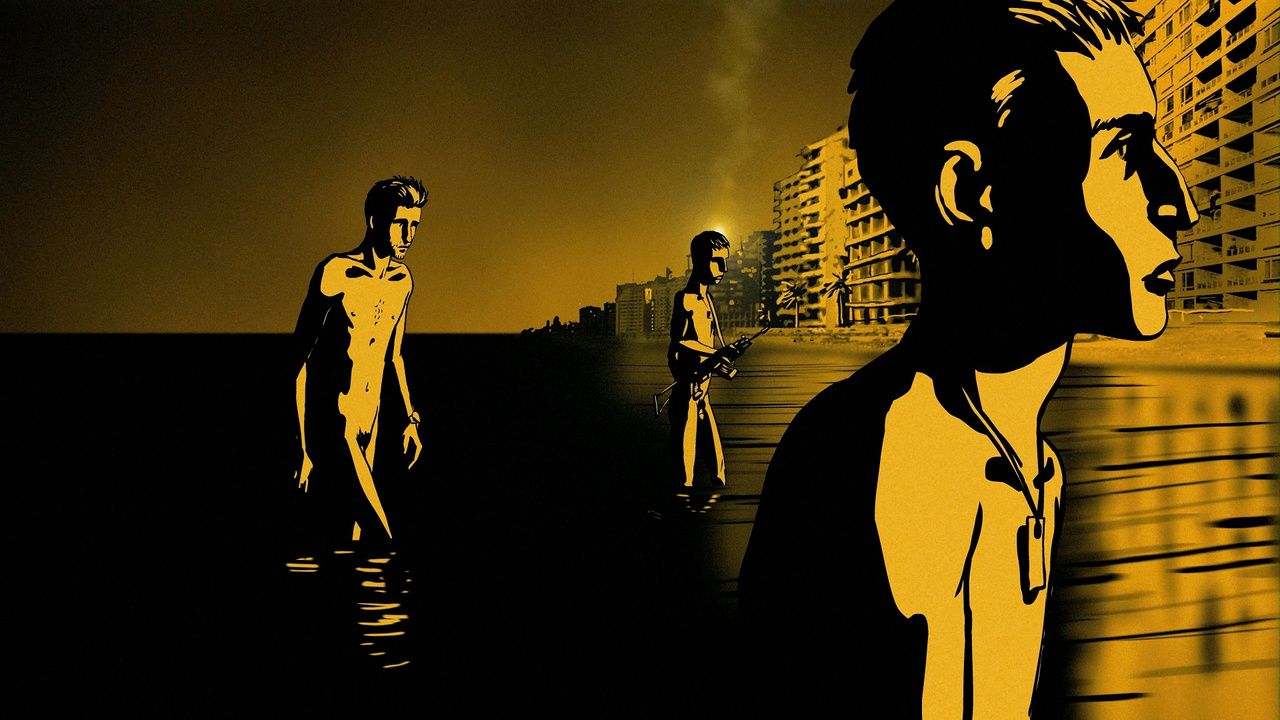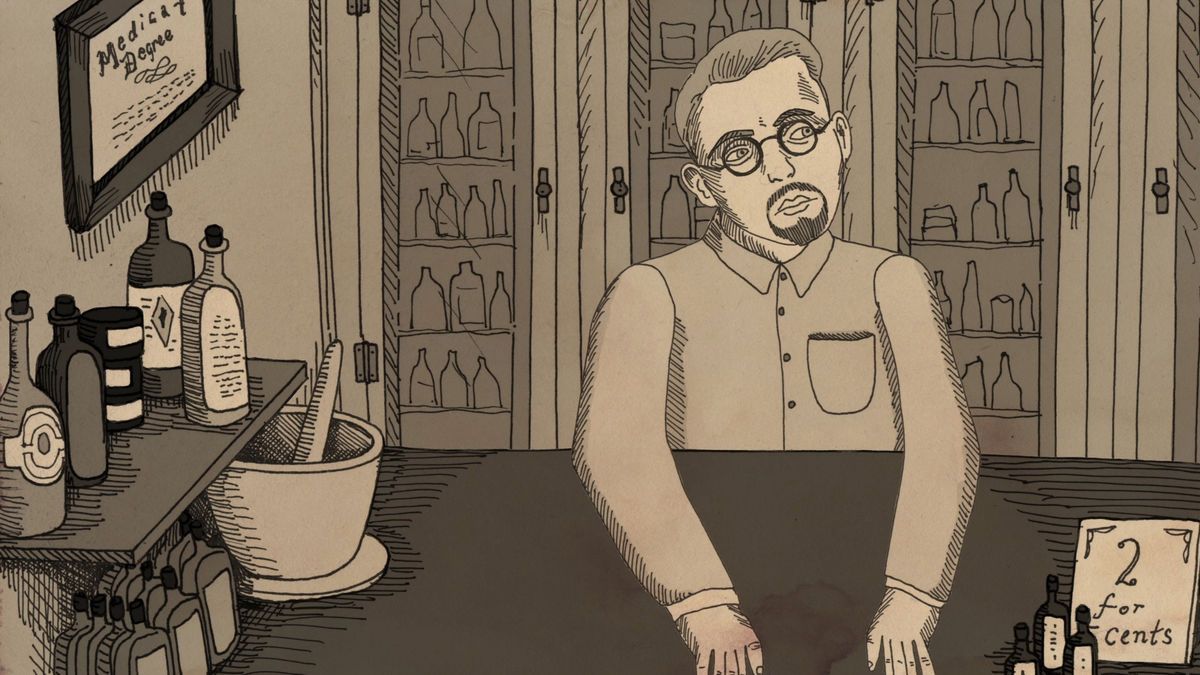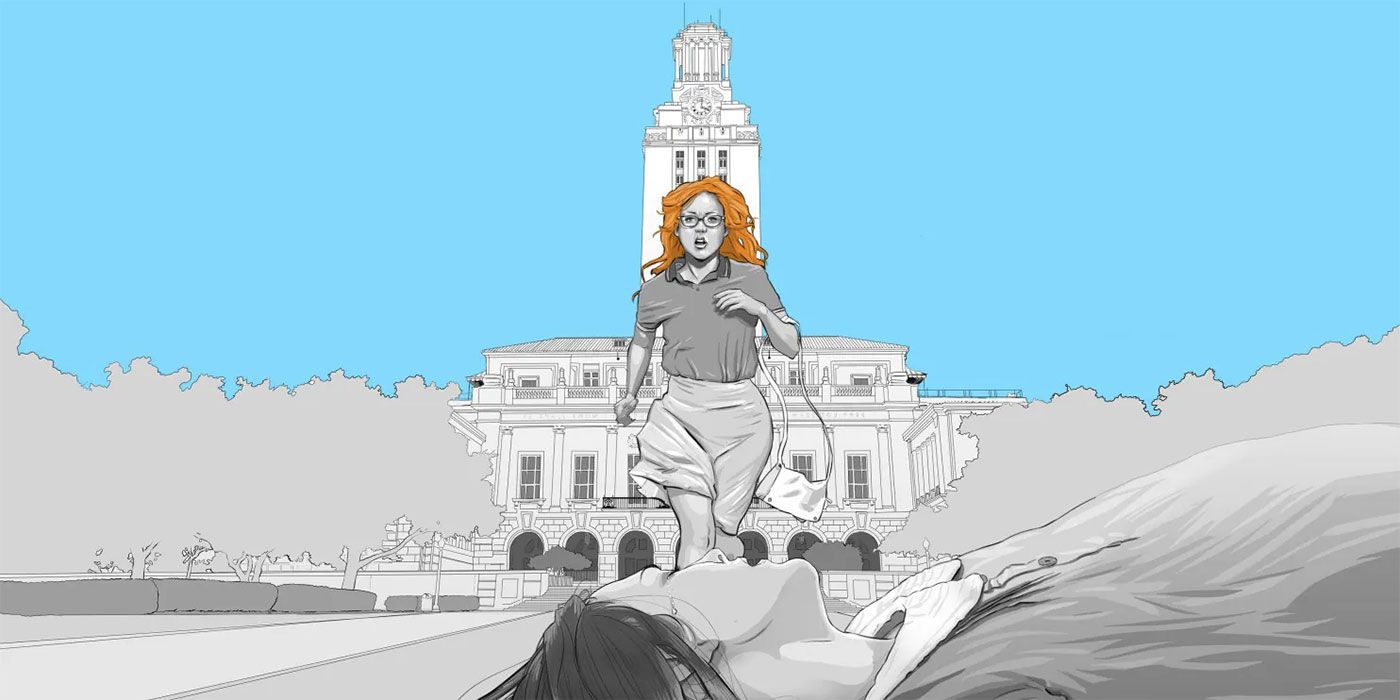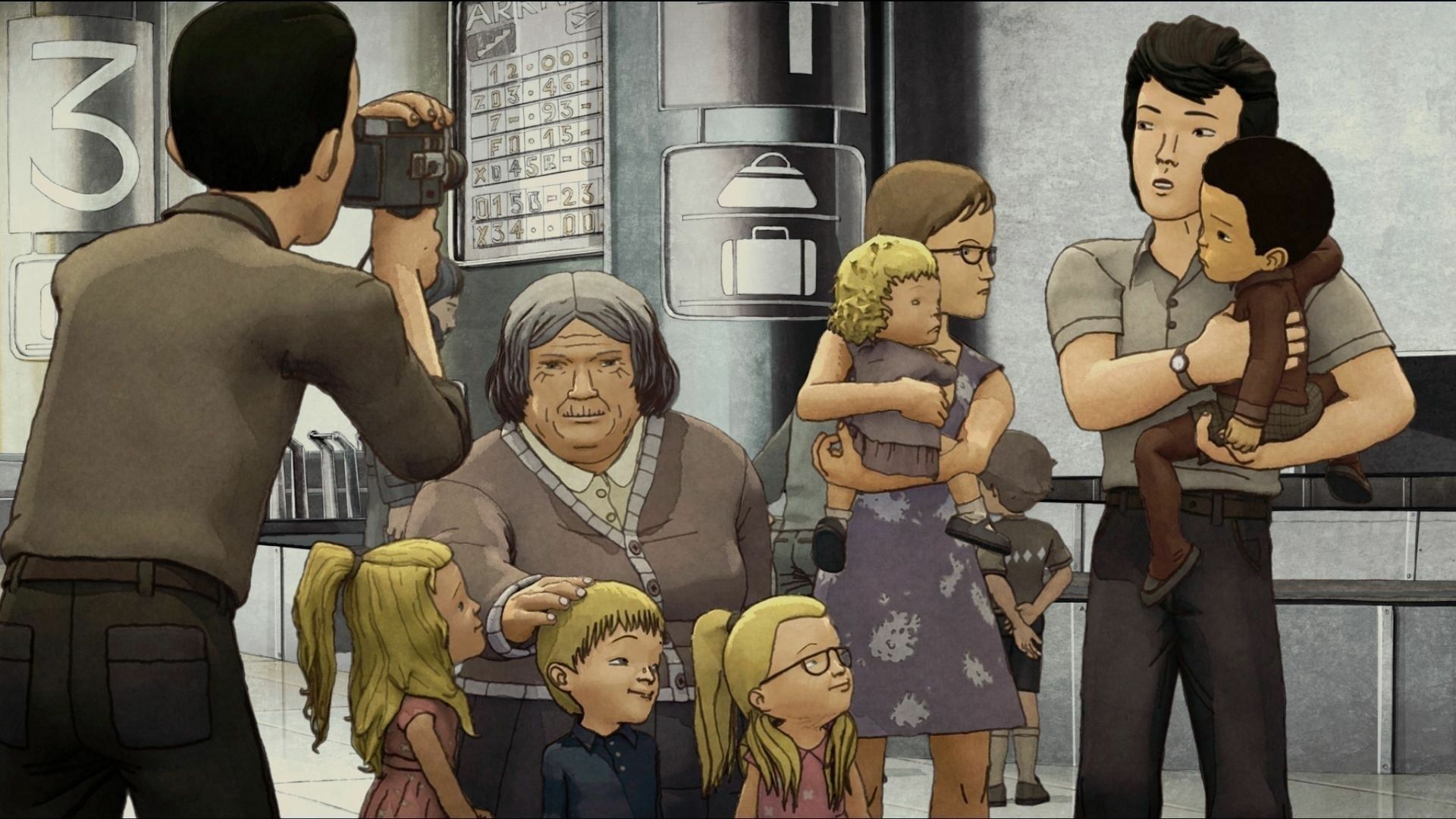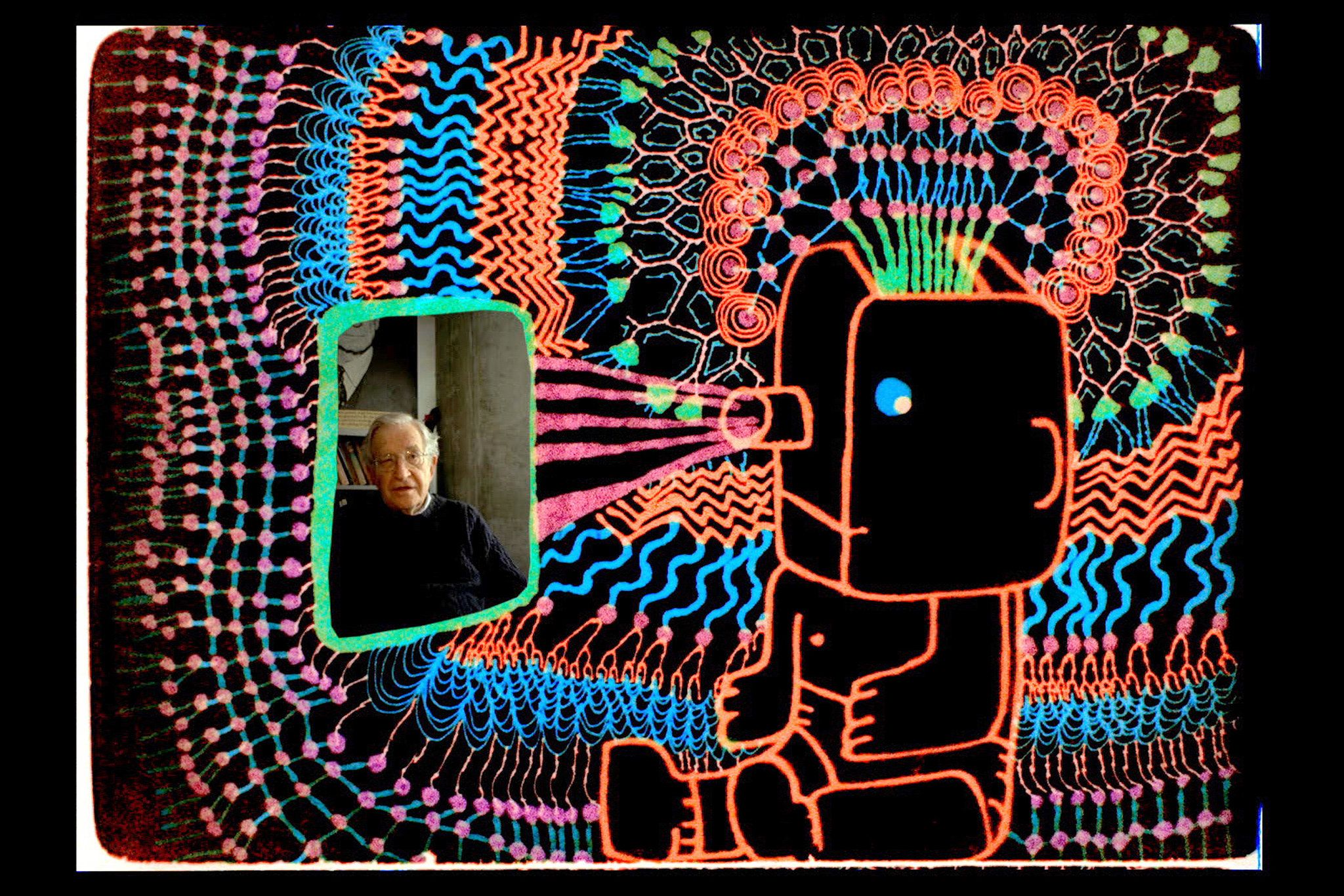A documentary film relies on the premise of reality. The documentarist’s pact with their audience is that everything they show on screen is factually real, even if there might be different interpretations regarding the events depicted. Unlike a narrative feature, a documentary must not embellish the story it tells, avoiding any kind of confusion between fact and fiction. Animation, on the other hand, is a medium frequently associated with the fantastic. From Fantasia to Akira to The Mitchells vs. the Machines, animation allows us to tell stories that live action cinema isn’t able to convey properly or that require an extra layer of stylization and detachment to work. Thus, it is often mistaken for a genre in and of itself, and, sometimes, as a genre with the sole purpose of telling fairy tales to children.
From these standpoints, it is almost impossible to imagine these two forms of storytelling walking side by side. However, none of these takes on animation and documentary filmmaking is entirely correct: documentaries require a certain level of narrative technique to create cohesive stories that focus on specific aspects and approaches, while animation, though not as faithful to reality on a material basis, might surpass traditional cinematography when it comes to conveying the true form of human emotions. Thus, it is no wonder that, every few years, a movie pops up to show us that animation and documentary have a lot to gain from one another.
The most recent example of this combination of techniques to gain hearts and minds all over the world is Flee. Directed by Jonas Poher Rasmussen, Flee has won dozens of awards over the course of 2021 and is currently nominated for three Academy Awards: Best Documentary Feature, Best Animated Feature, and Best International Feature Film, representing Denmark. The movie tells the story of a man identified only as Amin, an Afghani refugee that left his country as a child, right after the rise of the Taliban, and his painful journey through Russia and Estonia until he was finally given asylum in Danish soil. Combined with news footage of the social unrest that took over Afghanistan after the Soviet invasion, in the 1980s, the animation serves the pragmatic purpose of protecting Amin’s real identity. However, it also serves to create an atmosphere of hope, confusion, fear, or boredom, depending on which part of Amin’s life is currently being depicted on screen.
Flee is an amazing, devastating, and tender movie that treats its subject with a raw honesty that live action films often have trouble achieving. And, thankfully, it is far from being the only great animated documentary out there. With themes that go from the horrors of wartime to the one of most cartoonishly bizarre figures history has to offer, here’s a list of five animated documentary features that definitely deserve a look.
1. Waltz with Bashir (2008)
For most movie lovers, Israeli director Ari Folman’s Waltz with Bashir is probably the first film that comes to mind when they hear the words “animated documentary”. Nominated for Best International Feature Film in the 2009 Oscars, having lost the award to the Japanese drama Departures, Waltz with Bashir follows its director as he tries to reconstruct his memories of his time in the Israeli army during the 1982 invasion of Lebanon through conversations with friends and other former soldiers. Both the chats and the recollections of wartime are animated with a stylized cutout technique that is frequently confused with rotoscoping.
Directed by Yoni Goodman, the movie’s animated sequences translate the pained tone of the testimonies almost perfectly in its dark hues that obscure even the brightest of scenarios, capturing moments and emotions that would be too much for a regular camera, and treating memory not as fact, but as what it actually is: a mental construction colored by what we felt at the time and what we believe now. Only in its last minutes does Waltz with Bashir resort to real life news footage, and just because there are certain things that must be seen for what they are.
Frequently criticized for being yet another guilt-tripping war film, on the same line as American Sniper, Waltz with Bashir is best seen not as a politically engaged movie nor as a faithful historical recollection, but as an autobiographical essay on memory and how our mind deals with the horrors that we ourselves have committed. It’s a heart-wrenching, painful watch, but one that is worth every second.
2. Nuts! (2016)
Directed by acclaimed documentarist Penny Lane (Our Nixon), Nuts! tells the story of John Romulus Brinkley, a pioneer medical doctor and radio personality that built an empire out of curing people of the most horrific ailments the late-19th, early-20th century USA had to offer. Or maybe it’s about John Romulus Brinkley, a successful quack, snake oil peddler, and pioneer radio personality that built an empire out of allegedly curing sexual impotence with goat testicle transplants? Yeah, this one sounds better. With a screenplay loosely based on Brinkley’s authorized biography - The Life of A Man: Biography of John R. Brinkley, by Clement Wood -, Nuts! chronicles the rise and fall of an equally infamous and important historical figure with an incomparable sense of humor and an animation style that mixes different techniques, such as rotoscope, traditional 2D, and collage.
The result is reminiscent of the best early Adult Swim had to offer. As informative as it is funny, Nuts! also calls attention to the narrative process involved in making a documentary, often overlooked by the audience: by using Wood’s biography as its primary source, Lane initially sells us into the Brinkley myth to a point that the film might even feel slightly uncomfortable for those that are already familiar with the story. But rest assured that Lane knows exactly what she is doing. To quote the director herself, in a post from her official website: “Nuts! is not a film that allows us to sit back and laugh at the dummies who fell for Brinkley’s bullshit. Instead, it’s a film that shows we are all those dummies. Unlike Brinkley, however, I seduce you, and then I show you how I did it.”
3. Tower (2016)
On August 1, 1966, Marine veteran Charles Whitman climbed to the top of the University of Texas clock tower, in Austin. With a sniper rifle, he shot indiscriminately at students, faculty, police officers, and passers-by, killing a total of 16 people and injuring 31 others. Whitman was killed by three police officers and an armed civilian that took to the tower one hour and 36 minutes after he opened fire. Though not the first mass shooting in American history, nor the first one to take place inside an educational institution, the attack was, at the time, the deadliest of its kind. This shocking event that would repeat itself many times over the course of US history is reconstructed by documentarist Keith Maitland in his 2016 movie Tower.
Based on the 2006 Texas Monthly article 96 Minutes, by Pamela Collof, Tower combines archival footage, photographs, live action interviews, and rotoscope animation to shine a light on this brief but traumatic chapter of American history through the eyes of its survivors and the everyday heroes without whom the tragedy could have been much greater, from reporters who brought awareness to what was going on to students that carried out their wounded colleagues while the campus was still under fire. Juxtaposed with photographs and footage from the 1960s, the animation helps recreate the university’s campus and its surroundings. By itself, it gives audiences a sense of what it’s like to live through this otherwise unimaginable ordeal and takes viewers back in time, presenting us to survivors as they would have looked like at the time, and offering a nice contrast to their now aged flesh and blood faces that recount the events in live action at the end of the movie.
4. Approved for Adoption (2012)
Though not inaccurate, Approved for Adoption’s international title doesn’t do Jung Henin and Laurent Boileau’s biographic documentary justice. The film’s original title, Couleur de Peau: Miel, which literally translates to “Skin Color: Honey”, is much more faithful to the themes of isolation, belonging, and cultural disconnect that permeate this honest, intimate portrayal of a Korean adoptee coming of age in a white, Belgian family. A cartoonist and the author of the eponymous graphic novel that inspired the documentary, Henin himself is the protagonist of the movie, that chronicles his life with his adoptive family and his journey back to South Korea in search of information about his birth mother. One of the many children orphaned by the Korean war and the famine that followed the end of the conflict, Henin was found in the streets of Seoul and taken to an orphanage run by the Christian organization Holt International. Like many of others, he was adopted by a foreign family and lost all ties to the country in which he was born.
With 2D and digital animation, home videos, archival footage from the war and Holt International, and present images of Henin’s trip to South Korea, Approved for Adoption isn’t so much a historical investigation as it is an inquiry into the feelings of pain and confusion that come from taking a child away from their roots. The animated scenes depict moments from Henin’s childhood that couldn’t be captured by his father’s ever present Super 8 camera, like his conflicted feelings towards his sisters, his internalized hatred for all things Korean, and the rejection he felt from his grandmother and, sometimes, even his parents. It also depicts his rediscovery and coming to terms with his heritage, as well as the acceptance that the past is often forever lost.
5. Is the Man Who Is Tall Happy?: An Animated Conversation with Noam Chomsky (2013)
Though often divisive in all of his many areas of expertise, linguist, philosopher, and anarchist activist Noam Chomsky is undeniably one of the most influential thinkers of our time. Notorious around the web for purportedly responding to each and every email that pops up in his inbox and always being open for conversation, it is no surprise that he accepted French filmmaker Michel Gondry’s invitation to be the star of this 2013 documentary. In Is the Man Who Is Tall Happy: An Animated Conversation with Noam Chomsky, Gondry conducts a one hour and a half interview with the MIT professor on various topics, ranging from his childhood to recent linguistic discoveries to his opinions on education and the media.
The conversation itself can sometimes feel convoluted and aimless, mainly due to Gondry’s lack of experience as an interviewer, but it is still a great crash course on the fundamentals of Chomskyan thought. However, what really makes this movie worth a watch is the hand-drawn animation that illustrates the chat, only sometimes interspersed with live action images shot with a noisy 16 mm camera that quickly goes from annoying to integral to the film’s overall vibe. Made by Gondry himself, the animation shows the director at his wildest and most unhinged, presenting viewers with a level of inventiveness that is often absent from his mainstream projects, like Be Kind Rewind and Eternal Sunshine of a Spotless Mind. Granted, Is the Man Who Is Tall Happy? isn’t for everyone, but if you’re into Gondry or Chomsky in any capacity, it definitely deserves a spot on your watchlist.

